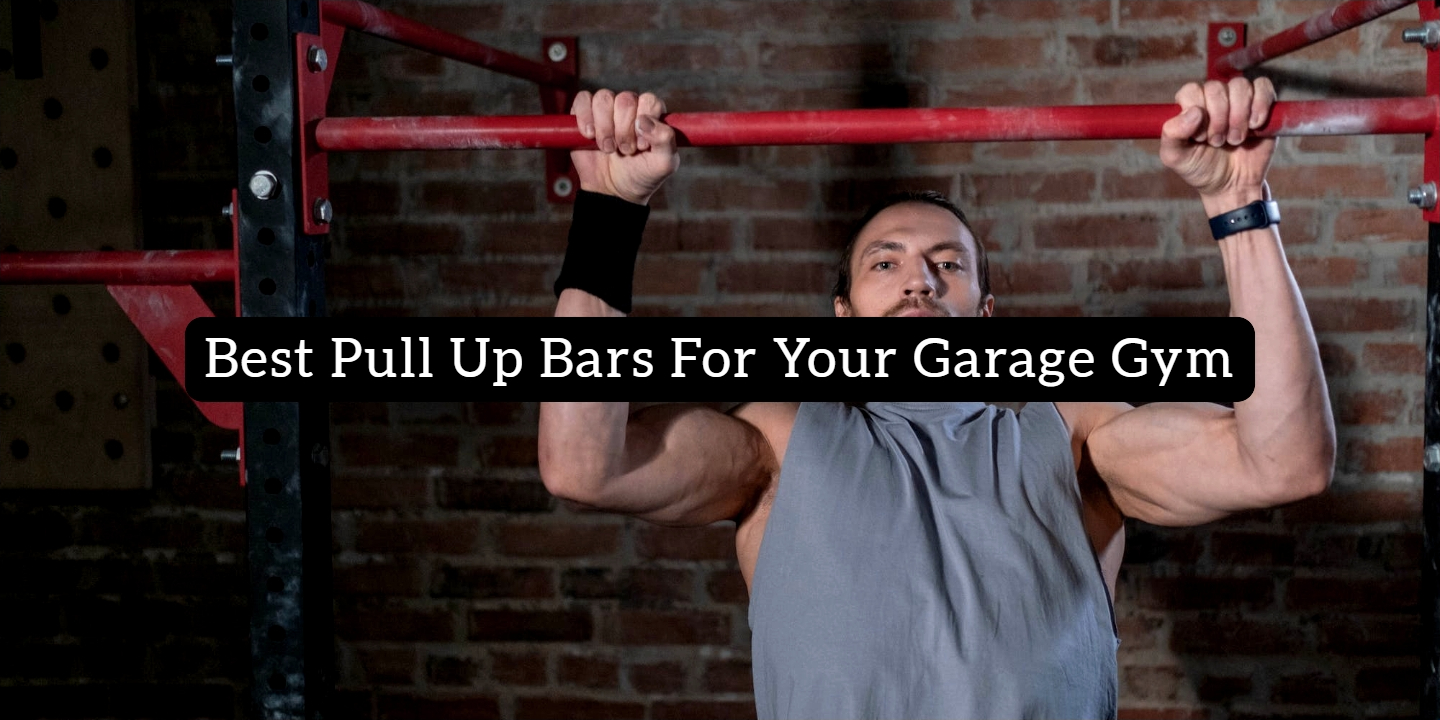Your garage gym is a sanctuary of sweat, steel, and self-improvement. But is it missing a key ingredient for upper body dominance? Well, you’re in for a treat!
We’ve rounded up the best pull-up bars for your garage gym you could try. They sculpt your back, blast your biceps, and build core strength like no other move.
And they are great for garages as well. Whether you’re a pro athlete or a pull-up newbie, we’ll help you find the bar that matches your prefs. Let’s get into it!
Ally Peaks Pull Up Bar
This low-cost model installs in seconds without damaging your doorframe. Seems like it’s a win-win situation, considering the price, isn’t it? It’s a gem for home training and will easily fit into your garage as well.
Pros:
- Multi-grip: It lets you mix up your pull-ups and routine for full-body training.
- Compact: Fits most doors and stores easily, making it nice for small areas.
- Affordable: Budget-friendly option compared to other models.
- Lightweight: Easy to lodge and remove without straining your back.
- Weight coverege: Handles up to 440 pounds, fitting most users.
Cons:
- Narrower width: May not be comfortable for wide grips and could overwork your arms.
- No warranty information: Raises questions about long-term durability.
Think twice if:
- You crave wide-grip comfort: The 32-inch width might feel cramped, potentially putting more strain on your arms than your back. Consider wider bars if this is your preferred exercise.
- You’re a heavy lifter: Heavier users might feel less secure due to the narrower design. Opt for sturdier, wider bars for peace of mind.
- Durability is a top priority: While user reviews generally praise its build quality, the lack of warranty information might raise concerns for some.
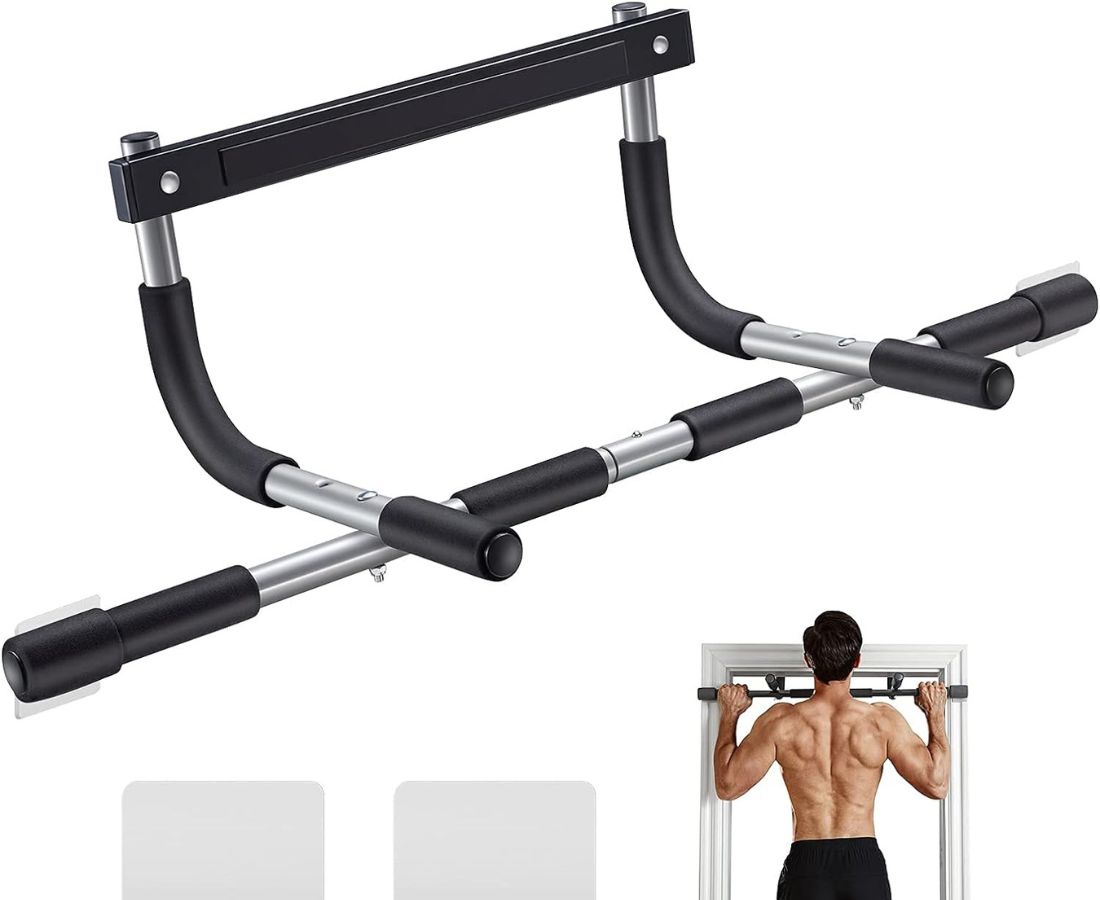
ProsourceFit Fit Multi-Grip
Craving a bar that’s simple, portable, and packed with tools without breaking the bank? This might be your answer. It easily fits in most doorways and stores away without hassle. Nice for small areas and those who like to take their workouts on the go.
Pros:
- Budget-friendly: Great value for the price compared to other models.
- Multi-grip versatility: Offers various exercises for complete upper-body training.
- Portable: Easy to set up and store, nice for small areas and travel.
- Convenient purchase: Free shipping and returns through Amazon simplify the buying process.
- Made in the USA: May appeal to those who prefer American-made products.
Cons:
- Lower weight capacity: Might not be ideal for heavier users.
- Limited durability information: Raises questions about long-term wear and tear.
- Grip width might be narrow: Check user reviews for confirmation if wide grips are important to you.
Think twice if:
- You’re a heavyweight lifter: With a 300-pound weight capacity, it might not fit those exceeding 150 lbs, especially for more advanced exercises.
- Durability is a major concern: While the steel construction seems decent for the price, some user reviews mention concerns about long-term wear and tear.
- Wide grips are your jam: The bar width isn’t specified, but some users find it slightly narrow for wider grip pull-ups, potentially impacting comfort and muscle engagement.
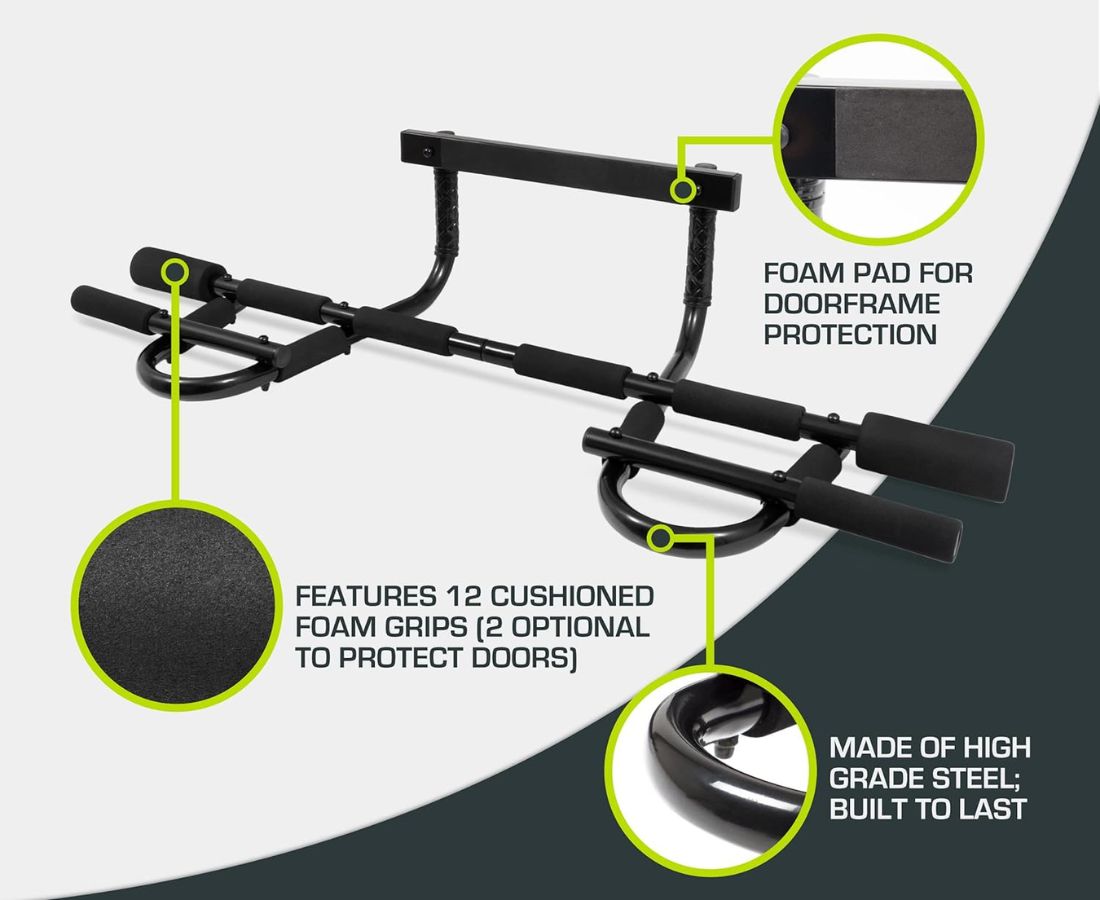
Perfect Fitness Multi-Gym Doorway Pull Up Bar
This one boasts versatility and ease of use, making it a tempting pick for those who want to sweet in a garage. With diverse positions, you can aim for diverse muscle groups with this one tool. The price tag is reasonable compared to other models as well. But it still has its cons.
Pros:
- Universal: You can do a lot of things with it.
- Simple: Set-up doesn’t need drilling or lasting fixtures.
- Portable: Lightweight design makes it easy to move around and store.
- Grip: Cater to diverse muscles and exercise variations.
- Frame protectors: Help avert damage to your door frame.
- Low-cost: Fits well into most budgets.
Cons:
- Materials: Aluminum construction raises durability concerns.
- Weight limit: Consider your weight for optimal product suitability.
- Grip width might not be ideal for everyone: Consider your preference for wide-grip pull-ups.
Think twice if:
- Durability is a top priority: The aluminum construction raises concerns about long-term sturdiness compared to steel bars.
- You’re a heavyweight lifter: The 300-pound limit might be insufficient for advanced users or those exceeding 150 lbs.
- Wide-grip pull-ups are your focus: While accommodating wider grips than most, it may not be ideal for everyone’s preferences.
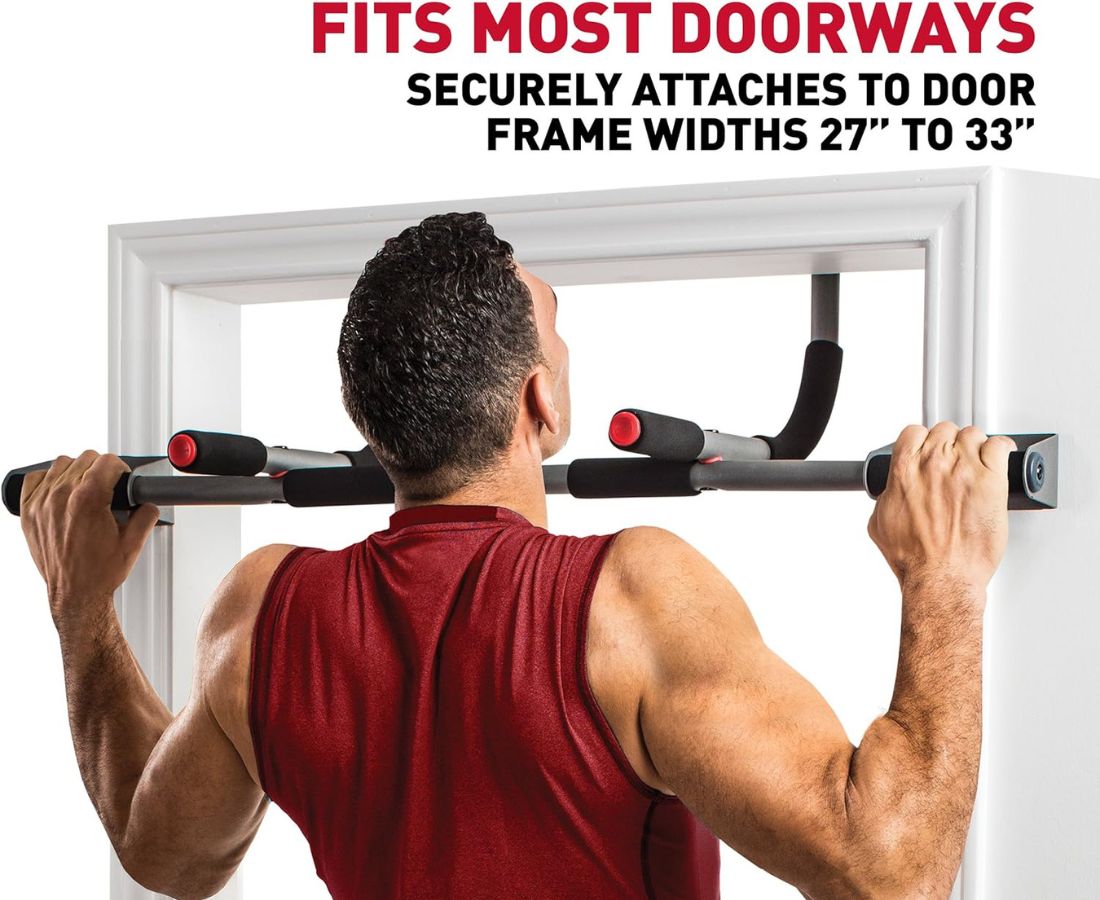
Adidas Door Gym
This option promises pull-up power without permanent fixtures. It installs and removes quickly, leaving no marks, making it great for rented areas or those with limited storage. The foam buffers protect your door frame from scratches and scuffs, easing concerns about potential damage.
Pros:
- Grip options: Target diverse muscles and progress your sessions with mixed positions.
- Easy installation and removal: Set up and take down in seconds, perfect for renters or those who dislike lasting fixtures.
- Door frame protection: Foam buffers prevent scratches and scuffs, giving you peace of mind.
Cons:
- Price premium: You pay more for the removable feature compared to permanent pull-up bars.
- Doorway limitations: Not universally compatible with all doorways, so check dimensions carefully.
- Awkward storage: The bulky L-shaped design requires dedicated storage space.
Think twice if:
- Budget is tight: While convenient, the price tag is higher than other models.
- Doorway diversity is lacking: This bar might not fit all doorways due to its size and specific mounting style. Measure carefully before committing.
- Storage solutions are limited: Its bulky L-shaped design can be challenging to store, requiring a dedicated space like a cupboard or garage.
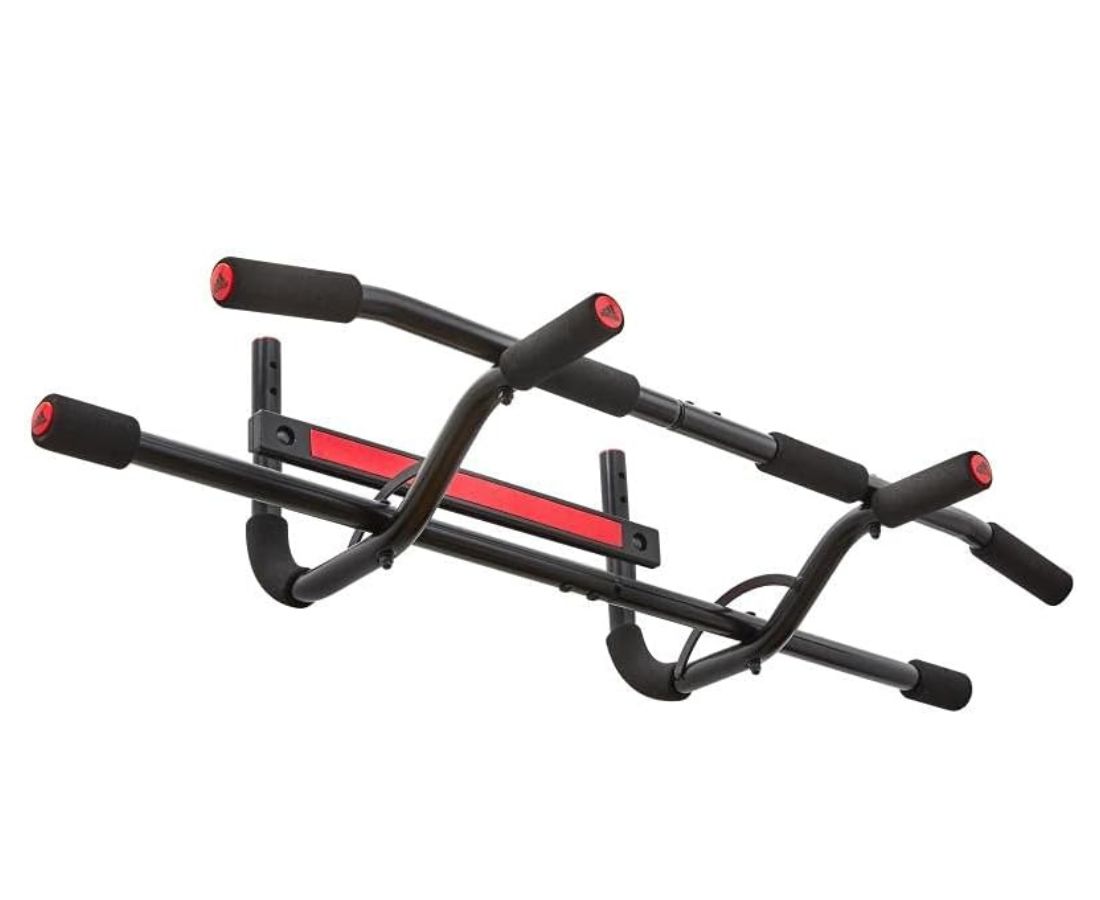
Duonamic Eleviia Portable Pullup Bar
This isn’t your typical bar. It’s more like two clamps with handles, with a highly portable design for pull-up buffs. The clamp needs no drilling or permanent fixtures, leaving no damage and making it renter-friendly. Installation takes secs, literally. Just clamp each side to a doorway, and you’re ready to pull up.
Pros:
- Portable: Take your training anywhere with its compact, and easy-to-clamp format.
- Doorway friendly: No drilling or damage, making it ideal for renters and those concerned about door frames.
- Quick and convenient: Installation takes mere seconds, perfect for spontaneous workouts or busy schedules.
- Decent weight capacity: Supports up to 250 pounds, accommodating most users.
Cons:
- Potential stability concerns: The clamp design might feel less sturdy than fixed bars, impacting heavier users or advanced exercises.
- Pricey compared to alternatives: The cost is significantly higher than many doorway or wall-mounted models.
- Grip width unknown: Unspecified grip width might not be ideal for everyone, especially those who prefer wider grips.
Think twice if:
- Stability is a top priority: This bar might not feel as sturdy as fixed-installation bars, potentially affecting comfort and confidence for heavier users or advanced exercises.
- Budget is a tightrope: At over $125, this bar is significantly pricier than many doorway or wall-mounted options. Consider if portability justifies the cost.
- Wide grips are your jam: The grip width isn’t specified, but some users find it slightly narrow, potentially limiting comfort for wider grip pull-ups.
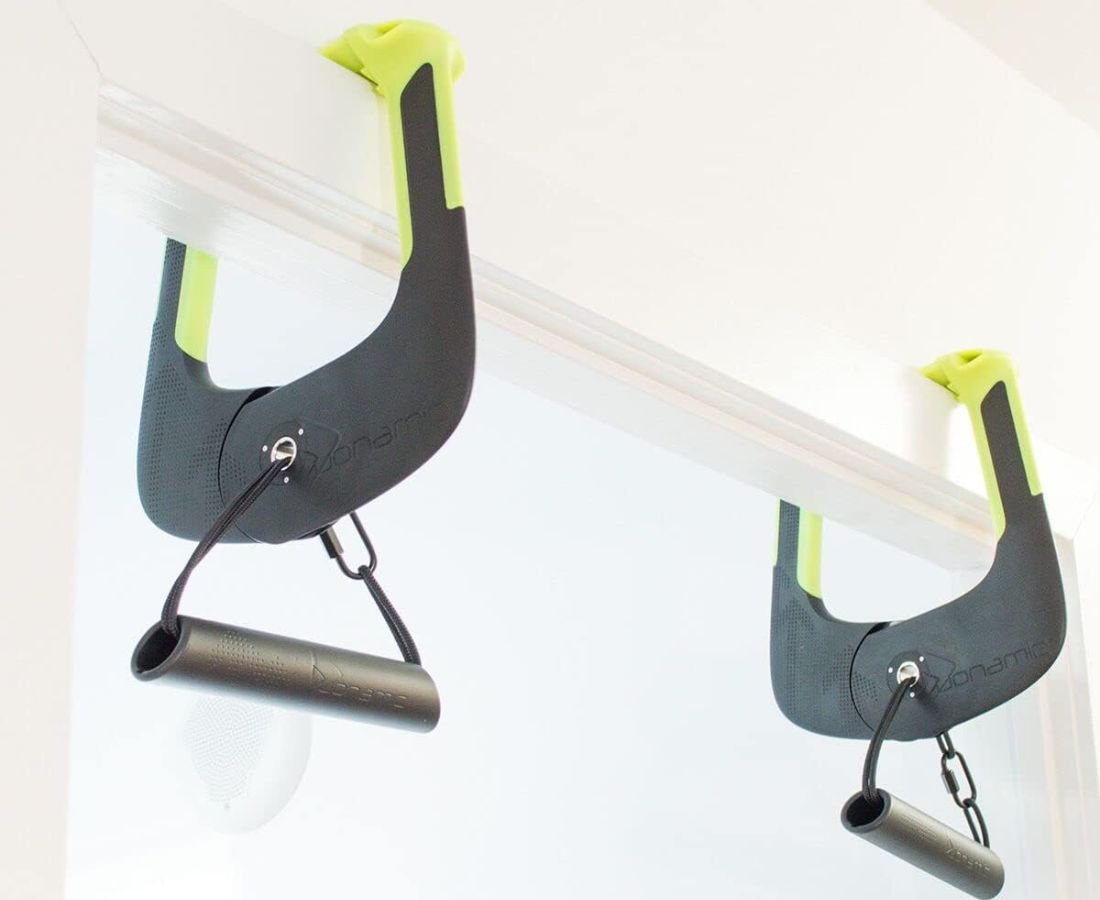
DMoose Doorway Pull-Up Bar
Here’s a bar that caters to athletes and users surpassing the ability of most doorway bars. The built-in eyelet lets you attach resistance bands or TRX straps for even more exercise options. And the grip type lets you target diverse muscle groups and keep your workouts dynamic.
Pros:
- Sturdy build and quality materials: The thicker metal frame and foam grips inspire confidence and feel more durable than many competitors.
- Multiple grip options: Vary your grip width to hit diverse back and bicep muscles.
- Handy eyelet for suspension training: Expand your workout possibilities by attaching resistance bands or TRX straps for dips, rows, and more.
- Impressive weight capacity: The 350-pound limit caters to heavier users and advanced exercises.
Cons:
- Expensive compared to other doorway bars: The price tag might be a dealbreaker for budget-conscious exercisers.
- Bulky and potentially difficult to store: Its size could pose challenges in apartments or compact living spaces.
- Assembly requires patience: Unclear instructions might make setup time-consuming and frustrating.
Think twice if:
- Budget is tight: This bar is pricier than many doorway pull-up bars, so consider if the extra features justify the cost.
- Storage space is limited: Its bulky size might pose storage challenges, especially in smaller apartments.
- Simplicity is your priority: Assembly can be fiddly with unclear instructions, requiring patience and time.
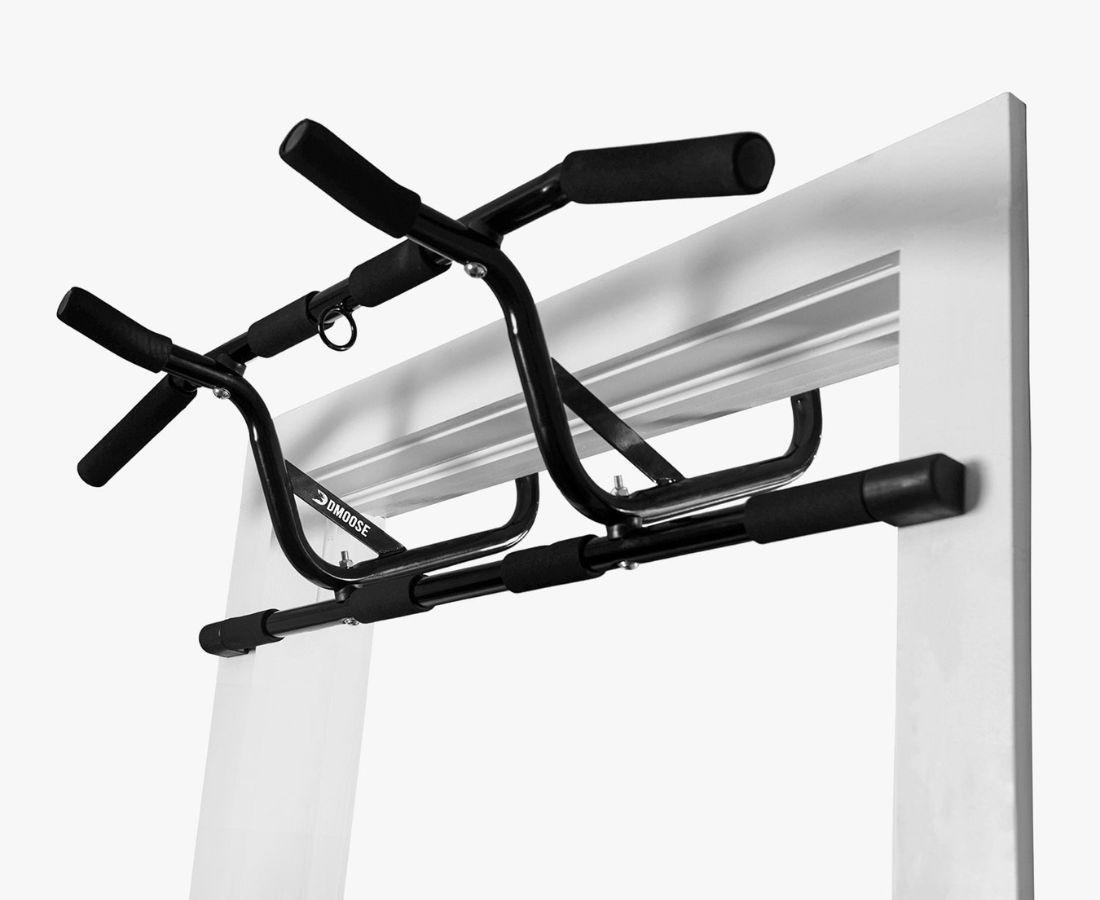
WALL MOUNTED MULTI-GRIP PULL-UP BAR
That one boasts a 700-pound weight capacity and diverse grip options, setting it apart from many wall-mounted bars. It caters to heavyweight users and advanced exercises. You can easily integrate this one into a home gym setup, including one in your garage.
Pros:
- Weight capacity: Handles even the heaviest users and most demanding exercises with ease.
- Grip options: You can target diverse muscles and personalize your training with it.
- Workout versatility: Sustains pull-ups, chin-ups, dips, rows, leg raises, and more for a complete upper-body workout.
- Warranty: Offers peace of mind in the product’s durability.
- Accessories: Use resistance bands, TRX straps, and gymnastic rings for even more exercise possibilities.
Cons:
- Requires permanent installation: Not ideal for renters or those who prefer flexibility.
- Space-intensive: Needs dedicated wall space, potentially posing challenges in smaller homes.
- Higher price tag: Costs more than some doorway bars, so weigh the value proposition carefully.
Think twice if:
- You don’t have much space: It requires permanent wall mounting, so ensure you have ample dedicated space before committing.
- Budget is tight: While the cost is reasonable for its components, it is pricier than models for casual exercisers.
- Grip details are unclear: The specific grip options are not mentioned, so consider if this meets your pull-up style.
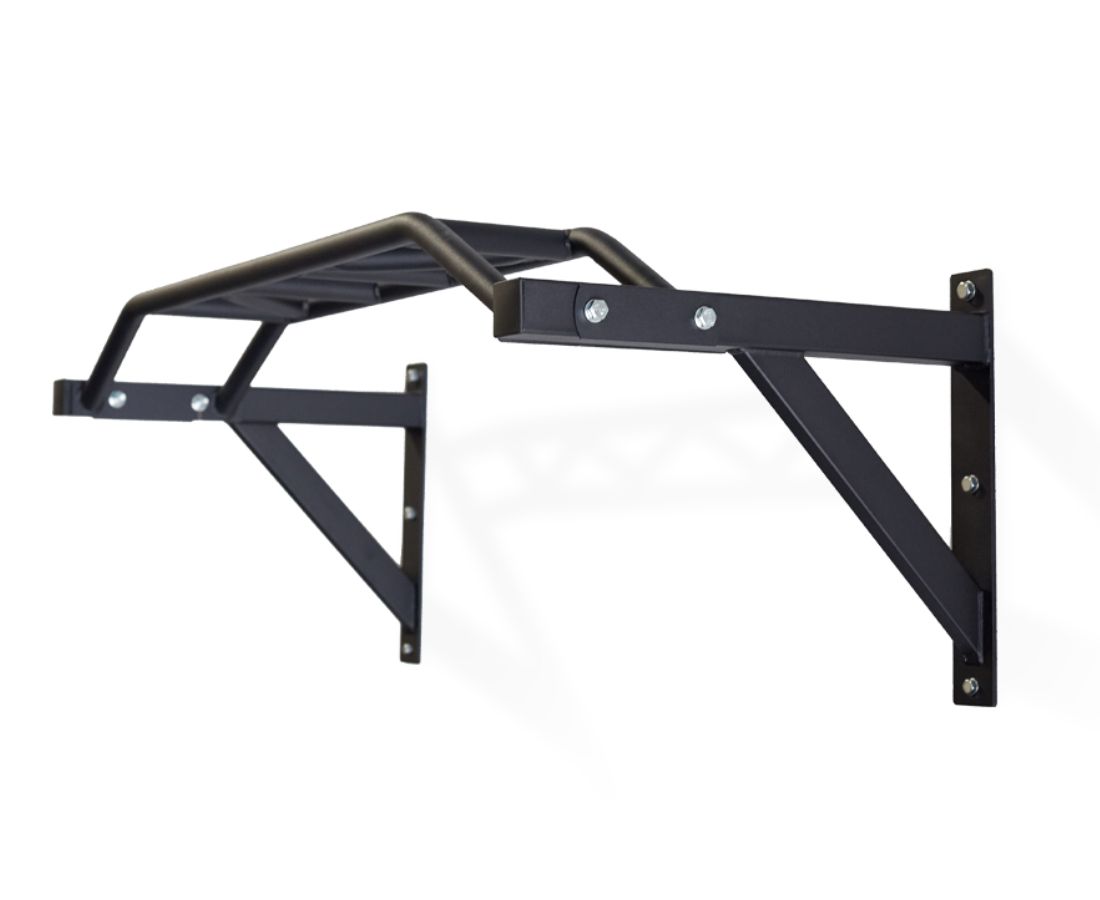
FAQ
Is a home pull-up bar worth it?
Absolutely! It’s nice if you’re a beginner and need a handy little thing to start training. Well, why pay for it if you can put it in your garage, right? These don’t take much spaces and most of them don’t need drilling. Plus:
- Effective: Pull-ups let you boost upper body strength, back, biceps, core, and forearms.
- Versatility: There are lots of training to do with this one.
- Convenience: Work out at home anytime, no commute needed.
- Cost-effective: One-time investment compared to ongoing gym fees.
- Durable: A good quality bar can last for years.
Consider your future goals when choosing a bar. If you plan on progressing to more advanced exercises, a multi-grip bar or one with additional features like dip stations might be beneficial.
Are pull-up bars safe for walls?
Yes, if installed correctly. Pick a bar with a weight capacity exceeding your own weight and ensure it’s mounted securely using the appropriate hardware for your wall type. Always follow the manufacturer’s instructions.
Additional safety tips:
- Check your walls: Brick, concrete, and studs are your wall buddies for pull-up bar mounting. Avoid flimsy drywall or plaster that might crumble under pressure.
- Use proper form: Avoid excessive swinging or jerking motions.
- Start slow: Slowly increase reps and difficulty as you get stronger.
What size bar is best for pull-ups?
The ideal size relies on your hand size and grip preference. Most standard models are 1.25 inches in diameter, but thicker models (2 inches) offer a more challenging grip. Some bars have diverse grip options, catering to different exercises and preferences. It really depends on what you’re planning to do and sometimes how experienced you are. It’s also nice to consider your weight cause some models have lower capacities, too.
Here are some general guidelines:
- Diameter: Standard bars are 1.25 inches, but thicker bars (1.5-2 inches) offer a more comfortable grip for some, especially those with larger hands.
- Grip width: Most bars offer a single grip width, but multi-grip bars provide options for wider and narrower grips, letting work on several muscles and exercise variations.

